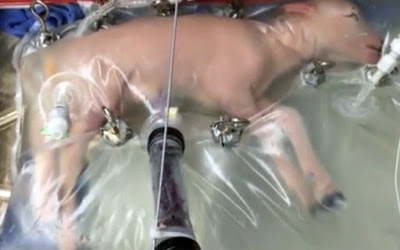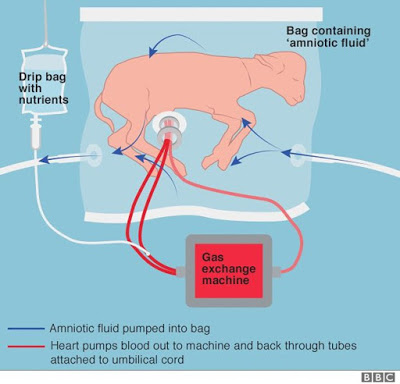Scientists have developed an "artificial womb" aspiring to be an environment conducive to keeping premature babies alive outside their mother's womb. The bag-like device has been successfully tested on small lambs.
It is believed that it may be available for trial use in babies of people who are at very serious risk in about three to five years.
The scientists, the Daily Mail notes, insist that this device is not intended to end the pregnancy process but only to provide a safe environment for babies born prematurely. The difference between this system and the incubators known to date is that it attempts to mimic the living conditions of the fetus in the womb. The baby is surrounded by amniotic fluid, which it would normally be in if it had not been born prematurely. It also allows the baby to breathe through the umbilical cord, as if it were still inside its mother's body.
In incubators, babies breathe through their tiny and often underdeveloped lungs. The new system seeks to prevent respiratory infections which are a common problem and cause of death in premature babies. It is also easier for the wet environment of the uterus-sac to remain sterile than for the incubator.
"Our system can prevent the serious illness that very premature babies can have by providing medical technology that does not currently exist," said Dr. Alan Flake, director of the Center for Fetal Research at Philadelphia Children's Hospital in the United States.
"These babies urgently need a bridge between their mother's womb and the outside world. "If we can provide an extrauterine system to support the development and maturation of their organs for a few weeks, we can significantly improve the lives of very premature babies."
The device was tested on six premature lambs, which breathed and swallowed normally, opened their eyes, developed their hair and functional nerves and organs, the scientists note in the review Nature Communications.
The lambs remained in the "artificial womb" for up to a month. Some were then killed to examine their brains, lungs and other organs for research purposes, and others were allowed to grow and be bottle-fed.
"They seem to grow normally in every way," says Dr. Flake when one of the lambs turned one year old.
He notes that there is no technology that can replace the mother's uterus in the early stages of fetal development.
Source: Newsbeast



